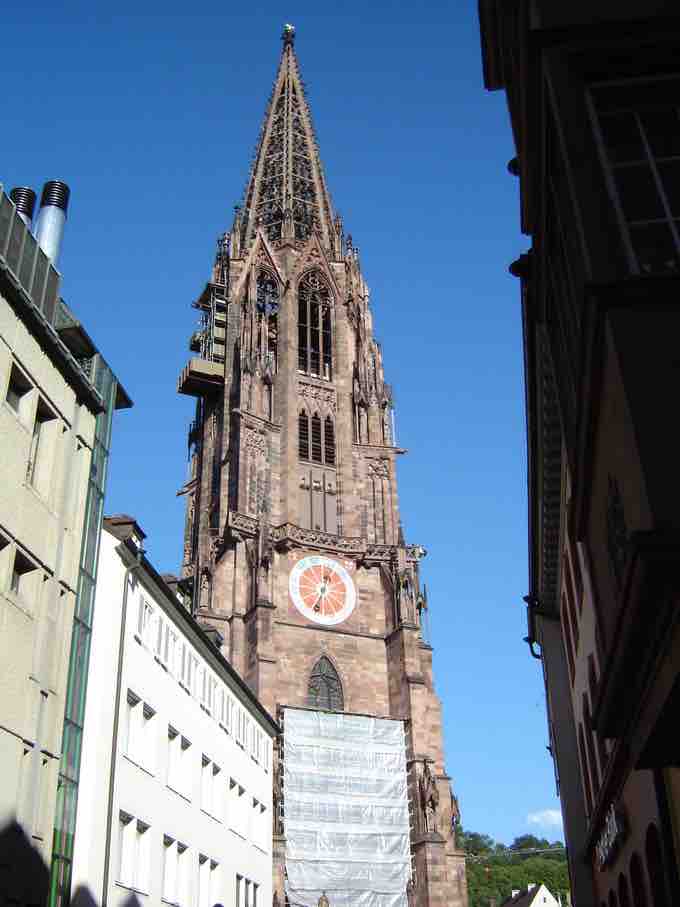German Gothic Architecture
Gothic architecture flourished during the high and late medieval period in the Holy Roman Empire, from approximately 1140–1400. The Gothic style first developed in France. Territories that constitute modern day Germany adopted the French Gothic and developed regional distinctions to this style.
German Gothic architecture is notable for its enormous towers and spires. Sometimes they were so big that they were left unfinished until modern times. The spires are quite different than English spires because they are made of lacy "openwork." There are also many hallenkirke (or hall churches), which have no clerestorey windows. The nave and the aisles are about the same height.
Freiburg Cathedral was built in three stages, the first beginning in 1120 under the Dukes of Zahringen, the second beginning in 1210, and the third in 1230. Of the original building, only the foundations still exist. It is particularly notable for its 116-meter tower, which is nearly square at the base, and the dodecagonal star gallery at its center. Above this gallery, the tower is octagonal and tapered, with the spire at the top. It is the only Gothic church tower in Germany completed in the Middle Ages (1330) that survived the November 1944 bombing raids that destroyed all of the houses on the west and north side of the market.

Freiburg Cathedral
View of the Freiburg Cathedral in Germany
Cologne Cathedral is, after Milan Cathedral, the largest Gothic cathedral in the world. Construction began in 1248 and took, with interruptions, until 1880 to complete—a period of over 600 years. It is 144.5 metres long, 86.5 m wide, and its two towers are 157 m tall. Because of its enormous twin spires, it also has the largest façade of any church in the world. The choir of the cathedral, measured between the piers, also holds the distinction of having the largest height to width ratio of any Medieval church.
Cologne Cathedral
The Cologne Cathedral is an example of German Gothic architecture.
The building of Gothic churches was accompanied by the construction of guild houses and town halls by the rising bourgeoisie. Examples are the Gothic Town Hall (13th century) at Stralsund, Bremen Town Hall (1410), and the (reconstructed) city hall of Munster (originally from 1350).
The dwellings of this period were mainly timber-framed buildings, as can still be seen in Goslar and Quedlinburg. Quedlinburg has one of the oldest half-timbered houses in Germany. The method of construction, used extensively for town houses of the Medieval and Renaissance periods, lasted into the twentieth century for rural buildings.
Brick Gothic
Brick Gothic (Backsteingotik) is a specific style of Gothic architecture common in Northern Europe, especially in Northern Germany and the regions around the Baltic Sea that lack natural rock resources. The structures are built, more or less, using only bricks. Stralsund City Hall and St. Nicholas Church are examples of this style. Cities such as Lubeck, Rostock, Wismar, Stralsund, and Greifswald are shaped by this regional style. St. Mary's in Lübeck, built between 1200 and 1350, was a model for many North German churches.
Hall Churches
Hall churches are another example of German Gothic architecture that is distinct from French Gothic. In hall churches, the aisles and nave are almost the same height and the stained glass windows are typically the full height of the walls, allowing in maximum light and space.
Munich Frauenkirche, Bavaria
Hall churches are a distinctively German interpretation of the Gothic style.